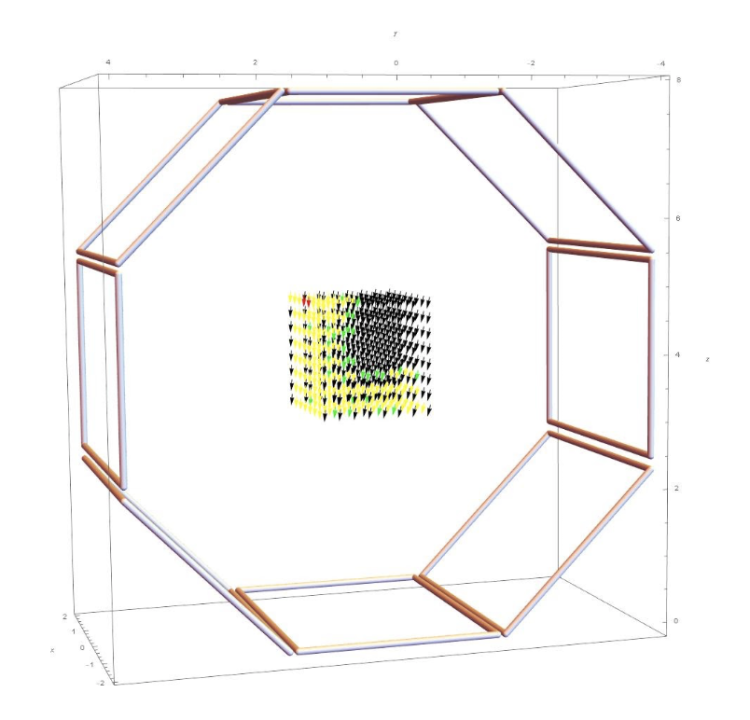The ME SPUR Experience: Gruener researches magnetic field design

Mechanical engineering undergraduate researcher, Jonathon Gruener.
The ME SPUR Program, modeled after CU Summer Program for Undergraduate Research, enabled undergraduate students to work with mechanical engineering faculty during summer 2020 on research that could be conducted remotely. As a participant, Jonathon Gruener worked with Associate Professor Svenja Knappe to create a testing environment for highly-sensitive miniature magnetic field sensors with non-invasive brain imaging, space and industrial applications. The goal of the project was to first model the desired field environment, and once the coil geometries were defined, design, print, and assemble magnetic field coils, with the final step being to measure and compare with the model. Gruener's summer research project was titled, Magnetic Field Design.
Gruener is a second-year student in the mechanical engineering department at CU Boulder. He is a passionate learner and especially excited to participate in projects that focus on mechanical engineering and computer science. His insights below provide a window into his research experience with ME SPUR.
Describe your summer research.
The purpose of the research project I have been working on has been to create a model of the magnetic field produced by an octagonal array of rectangular wire coils to determine the percent homogeneity. Originally, I was trying to model a cylindrical coil of wire but the math and requisite time to model that design proved to be overly complex, so my professor and I decided to attempt the octagonal shape instead. For me, the majority of this process has taken place using Mathematica to create various graphs and equations to model the magnetic fields. I have also spent time searching for academic papers that could apply to the research.
The result of my project was a working model of an octagonal array of rectangular coils with the potential for variation of almost every aspect of the coils: from length and width to individual currents. Additionally, I created various functions to test the homogeneity with different criteria. This model will be used to inform whether Professor Knappe and her researchers will attempt to build an octagonal array of coils for testing their microfabricated sensors or try a different shape.

Visual model of octagonal coil array and the resulting magnetic field.
What challenges did you encounter and work through as part of your project?
The challenges I faced most often this summer surrounded Mathematica. While there is a lot of documentation available from Wolfram Alpha, it often explains only the use of the function and not the behind-the-scenes workings of it. This often resulted in small errors that eventually compounded into a very unexpected result. An example of this was using a function to plot vectors in three dimensions. When creating my methods of testing homogeneity, I needed to measure and compare the z-component of each vector. However, while plotting the vectors, Mathematica scaled them in an unexpected way that didn’t appear to be explained in their documentation. To solve that issue, I created a mock graph that allowed me to access and manipulate the scaled vectors and then apply them to my final graph and comparisons.
What about this project was rewarding?
The most rewarding part of the project for me was seeing the final model and verifying that the digital representation concurred with the equations I had been given. It took a lot of modification of existing equations and research to create my model, and it felt great to see it all come together visually.
What advice would you share with other students considering getting involved in research?
Some advice I would share with other students considering getting involved in research is to trust your abilities to learn and adapt on the fly. Just because you don’t understand a component of the project doesn’t mean you will never understand it.

